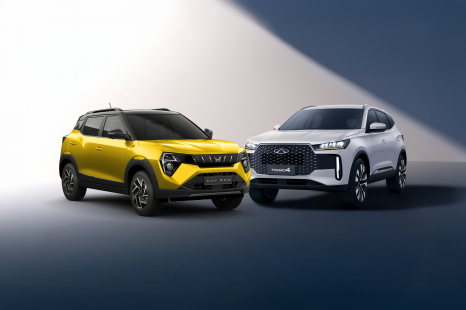

Andrew Maclean
2025 Mahindra XUV 3X0 vs Chery Tiggo 4: Spec battle
1 Month Ago
The new Hyundai Inster is a clever little electric SUV with plenty of tricks up its sleeve. But is it worth north of $40,000?
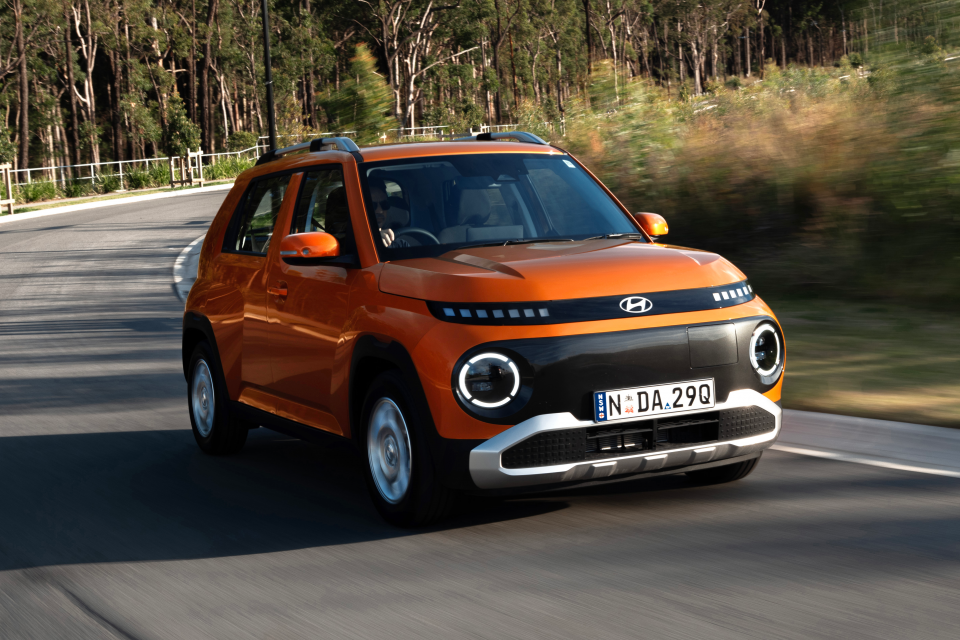
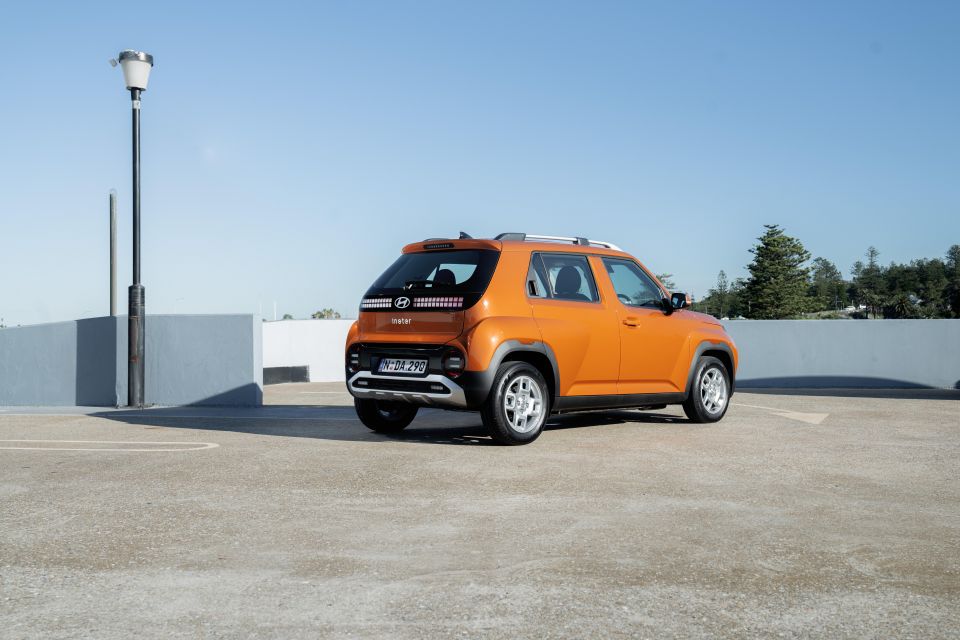

Deputy Marketplace Editor

Deputy Marketplace Editor


Deputy Marketplace Editor

Deputy Marketplace Editor
Where expert car reviews meet expert car buying – CarExpert gives you trusted advice, personalised service and real savings on your next new car.
The local launch of Hyundai’s new pint-size electric city car – the Inster – marks the beginning of a new era for the Korean automaker in Australia.

It coincides with the arrival of a new CEO, Don Romano, who is the first non-Korean to head up Hyundai Down Under.
Mr Romano, a seasoned veteran with four decades of experience in the automotive industry, has promised a tenure of growth and risk-taking. And the Inster, a unique proposition in a niche market, embodies that spirit of dare.
For a car that glides along the road in silence, the Inster turns heads wherever it goes. It’s colourful and comically compact, with a refreshingly cheerful disposition.
In other words, it’s the kind of vehicle we want on our roads. But is it worth paying more than $40,000 for the privilege of owning one? We spent 24 hours with a base Standard Range example to find out.
The Inster is now Hyundai’s smallest and most affordable EV, starting from just under $40,000 before on-road costs.
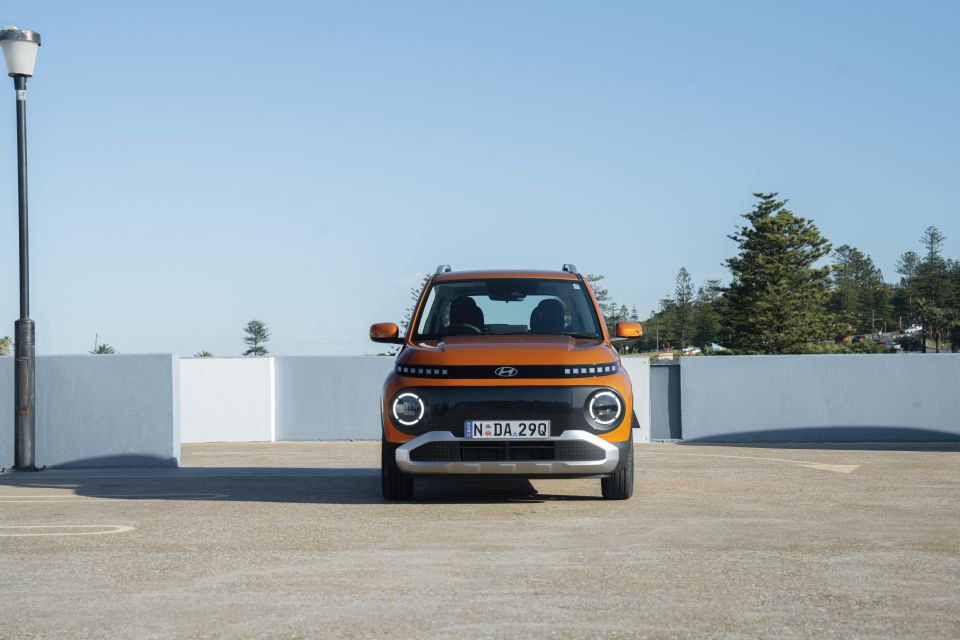
| Model | Price before on-road costs |
|---|---|
| 2025 Hyundai Inster Standard Range | $39,000 |
| 2025 Hyundai Inster Extended Range | $42,500 |
| 2025 Hyundai Inster Cross | $45,000 |
To put that into context, the Standard Range is $2010 dearer than a top-spec BYD Dolphin, and nearly double the price of a base Kia Picanto with an automatic transmission.
However, the Inster remains cheaper than other electric city car rivals such as the Fiat 500e and Cupra Born.
To see how the Hyundai Inster stacks up against its rivals, check out our comparison tool
You shouldn’t judge a book by its cover, and you really shouldn’t judge the cabin of the Hyundai Inster by its dainty exterior dimensions and futuristic appearance.

That’s because the Inster is far more practical than a city car has any right to be, even if it only has four seats, and the inside feels oddly familiar.
Sliding into the driver’s seat, the cabin feels roomy, almost like a shrunken van given the absence of a traditional central transmission tunnel.
It’s replaced by empty space, which can be used for extra storage or passenger legroom, or even as a path to exit either side of the car.
Controls commonly found in the central tunnel area have been relocated to a tall centre stack with self-explanatory climate buttons and dials, as well as a strip of buttons linked to commonly used features. The arrangement is relatively conventional and easy to get your head around, which is not always the case for vehicles in this vein.
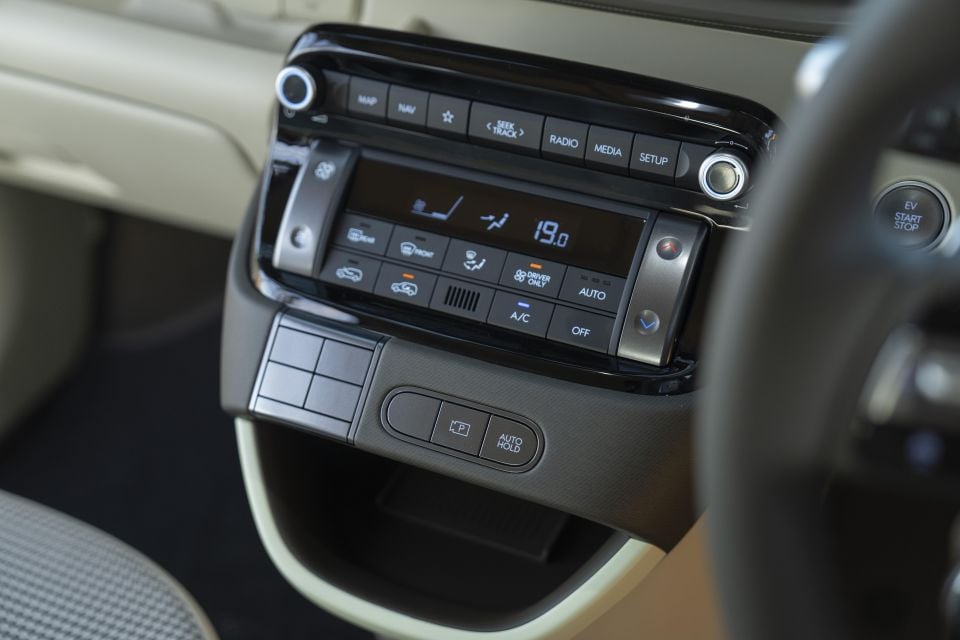
Above the physical buttons on the dash and steering wheel sit a pair of similarly straightforward screens. Both measure 10.25 inches in diameter, and impress with high resolution graphics and quick processing speeds.
The size of both displays ensures that all information is easily legible and the infotainment screen employs an app grid that’s easy to navigate. Speaking of navigation, the Inster isn’t wanting for useful features – native navigation, wireless smartphone mirroring, and Hyundai’s Bluelink connected services are all standard across the range.
As for the digital instrument cluster, it boasts different designs for each of the four main driving modes, even borrowing Hyundai’s N division.
Tactile controls and user-friendly screens make for a functional technology offering, but I wouldn’t call the dash in the Inster a beautiful piece of design. All the elements come together in a hodge-podge way, and that’s before you consider the materials.

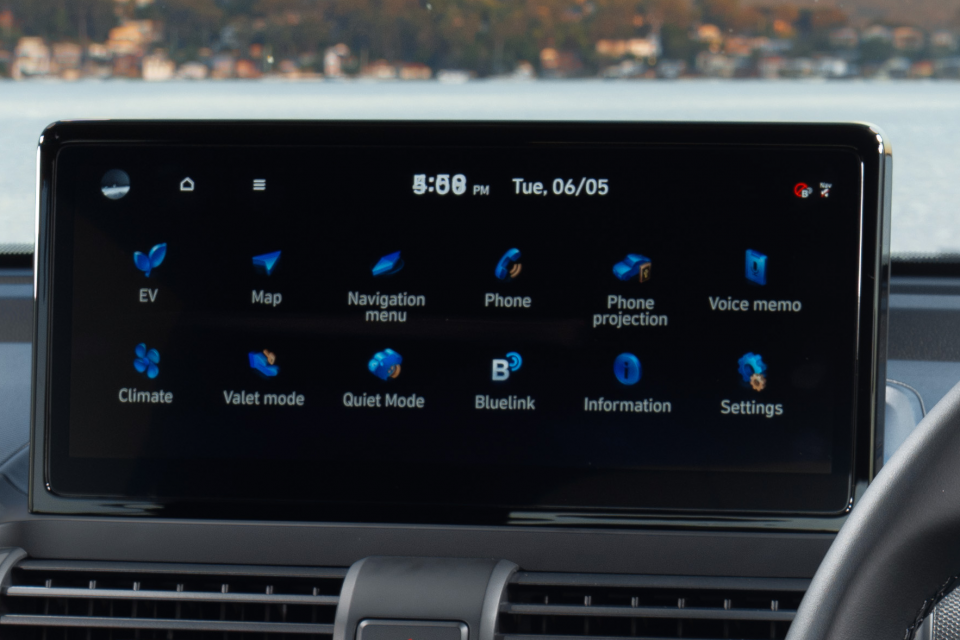
Indeed, the interior of the base Inster is dominated by black plastics, which feature prominently throughout the cabin. Just about all those plastics are hard and unpleasant, aside from a couple soft-touch finishes on the steering wheel and centre armrests.
Now, I’m not saying that mainstream city cars should be trimmed in leather and wood from floor to ceiling, but you’d expect higher quality materials in a car that costs nearly twice as much as a Kia Picanto.
It’s for this reason that I’d actually be inclined to spend up for the Inster Extended Range that offers Khaki Brown and Newtro Beige colourways to distract you from the scratchiness of the surfaces.
With that said, the cloth seats in the entry-level Standard Range are comfortable enough, with a supportive base cushion and adequate lateral support. The steering column offers plenty of reach and tilt adjustment, so it’s easy to find a comfortable driving position.

As previously alluded to, a foldable armrest takes the place of standard centre console, and it significantly boosts comfort over long journeys. However, there’s nowhere to rest your right elbow as the door cards are on the skinny side.
There’s plenty of room for life’s essentials though, as the Inster punches above its weight from a storage standpoint.
The glovebox is unexpectedly spacious, and additional storage trays can be found in the dash and centre stack. Connectivity options are plentiful too – USB-A, USB-C, and 12V power outlets all sprout from the dash, as well as a wireless phone charging pad and 250V socket to suit laptop chargers and the like.
The Inster is absolutely brimming with practicality in the front row, and it doesn’t end there.
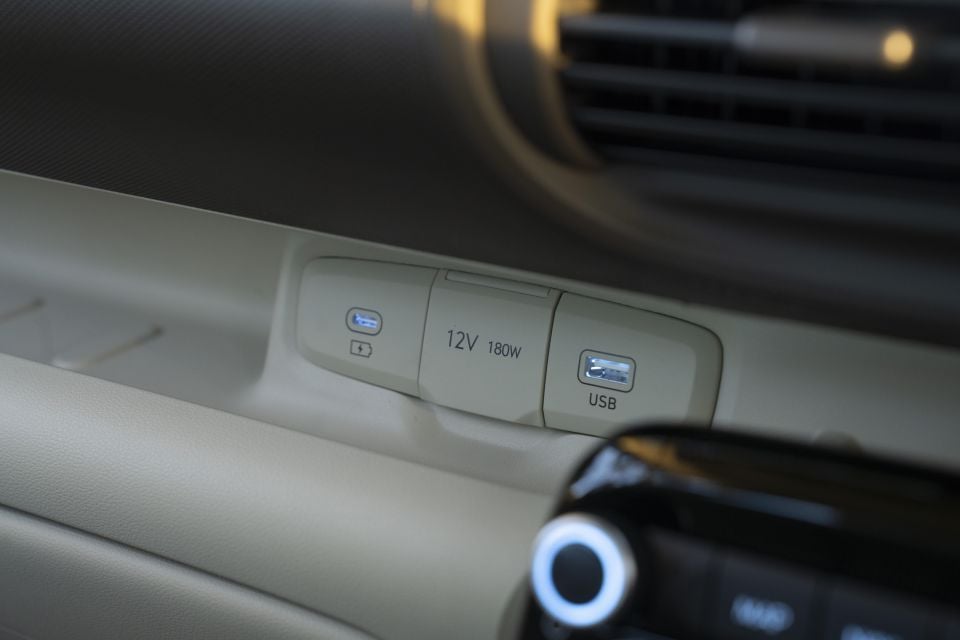
To my amazement, the Inster boasts enough space to seat four adults in comfort and a configurable layout that lends itself to all manner of common errands.
Take the humble IKEA trip, for one. While most light vehicles struggle to swallow a single piece of flatpack furniture, the Inster has no such trouble thanks to genius rear seats that both slide and fold completely flat.
One moment you’re transporting family and friends around town, the next you’re driving the world’s smallest minivan. The flagship Inster Cross takes this concept one step further with a front passenger seat that also folds flat for extra storage space.
In terms of legroom and headroom, the Inster will accomodate passengers up to a maximum height of around six-four – pretty good going for pint-size EV that’s just 193mm longer than a Fiat 500e.
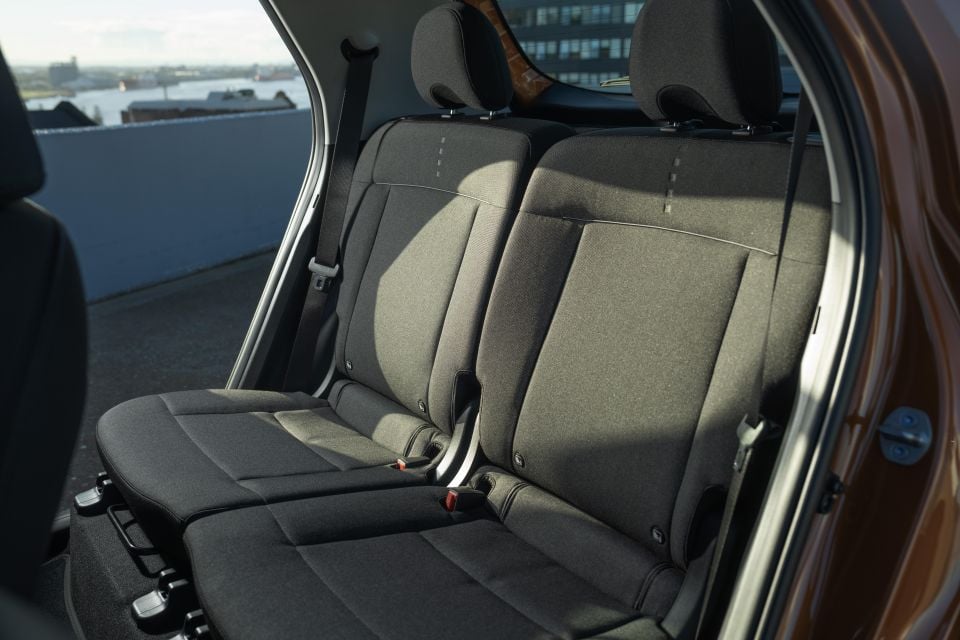
Even with the rear seats in their forwardmost position, there’s ample room for children and adults alike. The omission of a middle seat also affords each rear passenger the ability to spread out and get comfortable.
But space aside, there’s not much to enjoy back there.
You can forget USB outlets or air vents, let alone a centre armrest and cupholders. Even the door storage is pitiful.
I suppose a compromise had to be made somewhere, but it seems silly a second row that’s so useable yet so sparse.
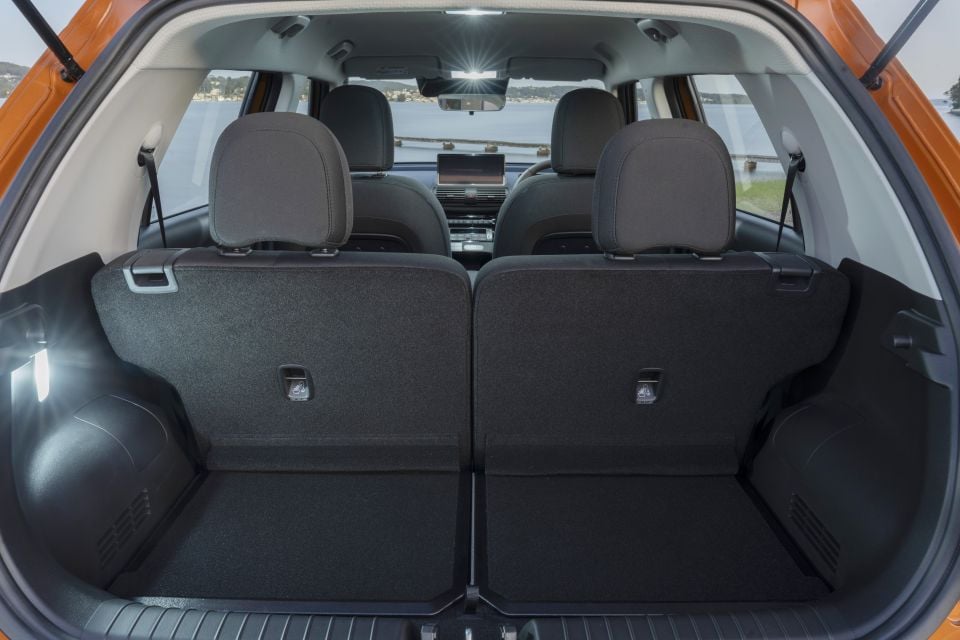
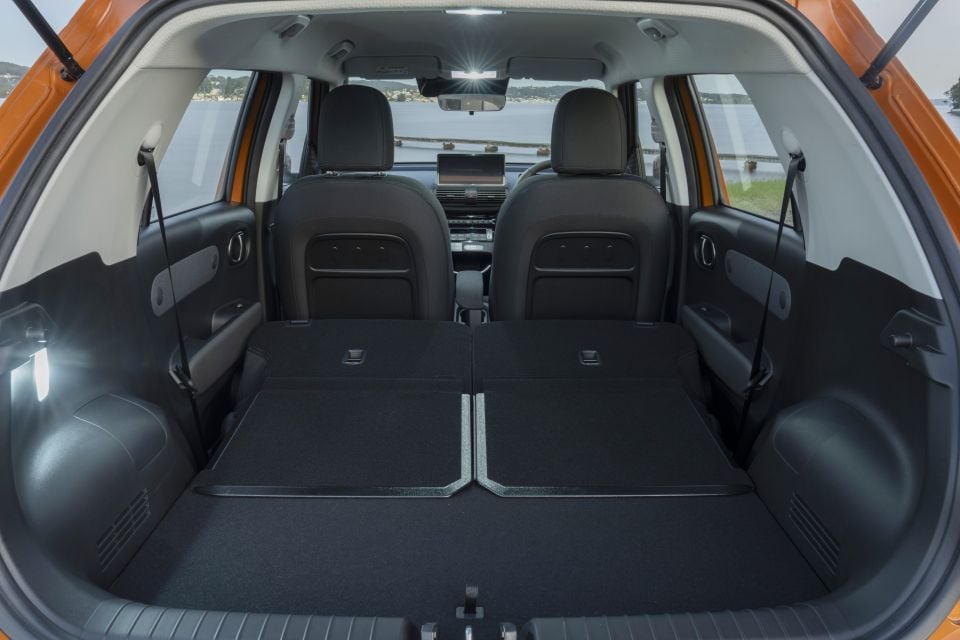
With all four seats in use, the boot offers a claimed 280L of cargo capacity – not terrible by any means. More importantly, each rear seat folds flat to unlock up to 1059L, and there’s an additional storage area under the boot floor.
Under the bonnet you’ll find a whole heap of wiring and electrical components. In other words, no ‘frunk’.
| Dimensions | Hyundai Inster |
|---|---|
| Length | 3825mm |
| Width | 1610mm |
| Height | 1575mm |
| Wheelbase | 2580mm |
| Cargo capacity | 280-1059L |
To see how the Hyundai Inster stacks up against its rivals, check out our comparison tool
The Hyundai Inster is available with two electric motor and battery options. On test here is the Inster Standard Range, featuring a smaller 42kWh battery and 71kW electric motor.
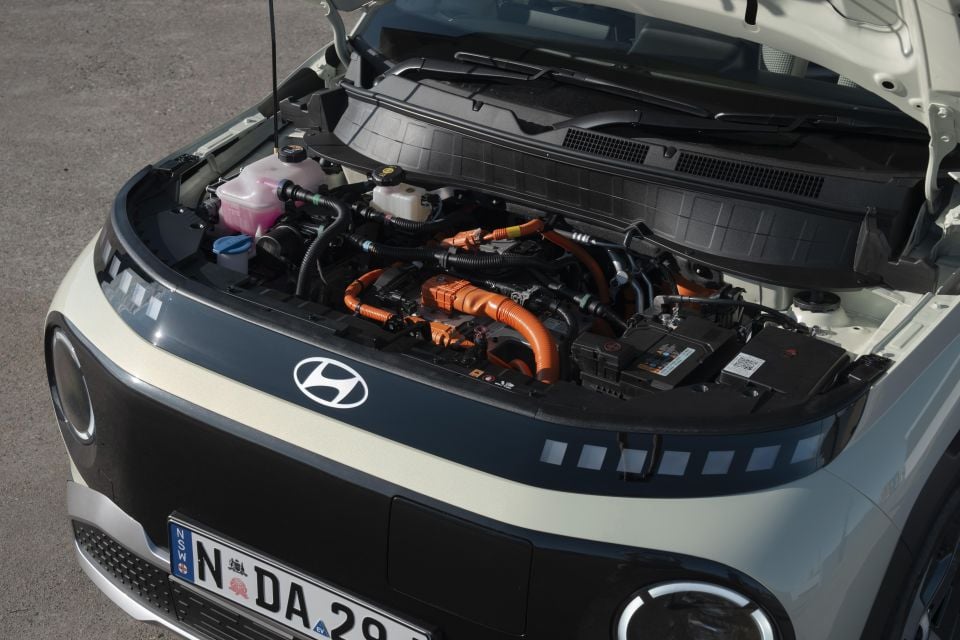
| Specifications | Hyundai Inster Standard Range |
|---|---|
| Drivetrain | Single motor electric |
| Battery | 42kWh Nickel manganese cobalt (NMC) |
| Power | 71kW |
| Torque | 147Nm |
| Drive type | Front-wheel drive |
| Weight | 1305-1393kg |
| 0-100km/h (claimed) | 11.7 seconds |
| Energy consumption (claimed) | 15.6kWh/100km |
| Energy consumption (as tested) | 11.2kWh/100km |
| Claimed range | 327km |
| Max AC charge rate | 10.5kW |
| Max DC charge rate | 120kW |
Although Hyundai claims the Inster will average unremarkable energy consumption of 15.6kWh/100km, our tester returned an exceptional 11.2kWh/100km over 200km of mixed driving.
Enthusiasts may bemoan the paltry outputs of the Inster variants offered in Australia, and Hyundai has unfortunately confirmed that there are no plans for a more sprightly N version.
To see how the Hyundai Inster stacks up against its rivals, check out our comparison tool
The Hyundai Inster is the quintessential city runabout for the modern age.
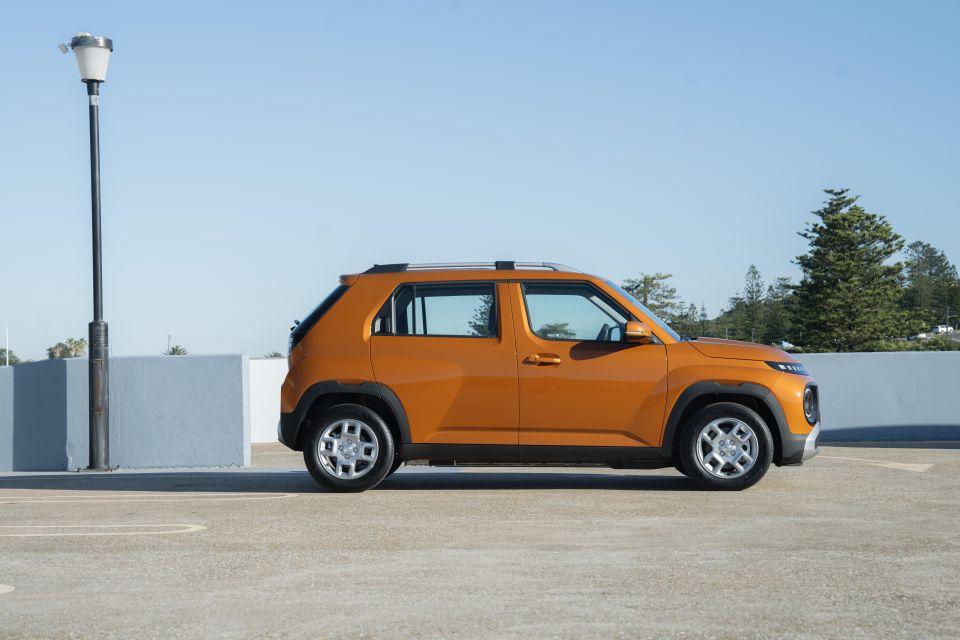
As its dimensions suggest, it is small and easy to pilot in tight confines, with light steering and a responsive front-end. I was easily able to execute a three-point turn when confronted by a dead end, while narrow laneways and multi-story carparks pose no threat.
I just wish the advanced driver assist systems (ADAS) weren’t so sensitive.
The driver monitoring system (DMS) is the worst offender, annoying with constant beeps and bongs when you so much as glance away from the road ahead. Likewise, overspeed warnings are often inaccurate.
Thankfully, you can tinker with ADAS settings through the infotainment screen, and permanently disable audible overspeed warnings by holding down the volume control.
In the suburbs the ride is well balanced – neither too soft nor too firm, especially on the base 15-inch alloy wheels. The Inster is generally unfazed by road joins and general imperfections, although speed bumps can cause the rear to bounce.

The single-motor electric powertrain is also fit for the purpose of urban motoring. It offers instantaneous response and smooth acceleration between the speeds of 0-60km/h – enough to keep up with traffic around town.
However, as the outputs and claimed 0-100km/h time suggest, you won’t win many drag races. You can safely mash the throttle without worrying about losing your licence, and while that limits the fun you can have on country roads, it’s actually a blessing in built-up areas.
After all, driving a slow car fast is more enjoyable than driving a fast car slow. With that said, something like a BYD Dolphin Premium is better suited to making high-speed overtaking manoeuvres, and it’s less likely to embarrass you in an on-ramp grand prix.
The Inster mightn’t pack the power to thrive on the highway, but it certainly feels more settled at those speeds than some rivals.
Hyundai pitches the Inster as a genre-bending model and it’s easy to see why – despite its many small car characteristics, it stands upright with an elevated seating position that’s more akin to a proper SUV.

Where expert car reviews meet expert car buying – CarExpert gives you trusted advice, personalised service and real savings on your next new car.
You don’t feel dwarfed by other cars – rather, the Inster feels solid and substantial. It’s surprisingly refined, too.
Tyre noise remains subdued and Hyundai’s semi-autonomous driving technology is among the best in this segment. It’s a set and forget system that requires little intervention.
Wind noise tends to permeate the cabin at higher speeds, but that’s forgivable when you consider the limited capacity for insulation. The electric motor doesn’t sound strained at cruising velocity, either.
Beyond highway driving, we took the Inster out to the Royal National Park just south of Sydney to test its capabilities on twisty country roads. Those capabilities are limited, as this little car wasn’t engineered for dynamic driving.
While the Inster is stable and composed at moderate speeds, it’s prone to understeer and pronounced body roll when hustled through corners. These traits make the Inster feel more like a bumbling SUV than the nippy light car it’s trying to be.
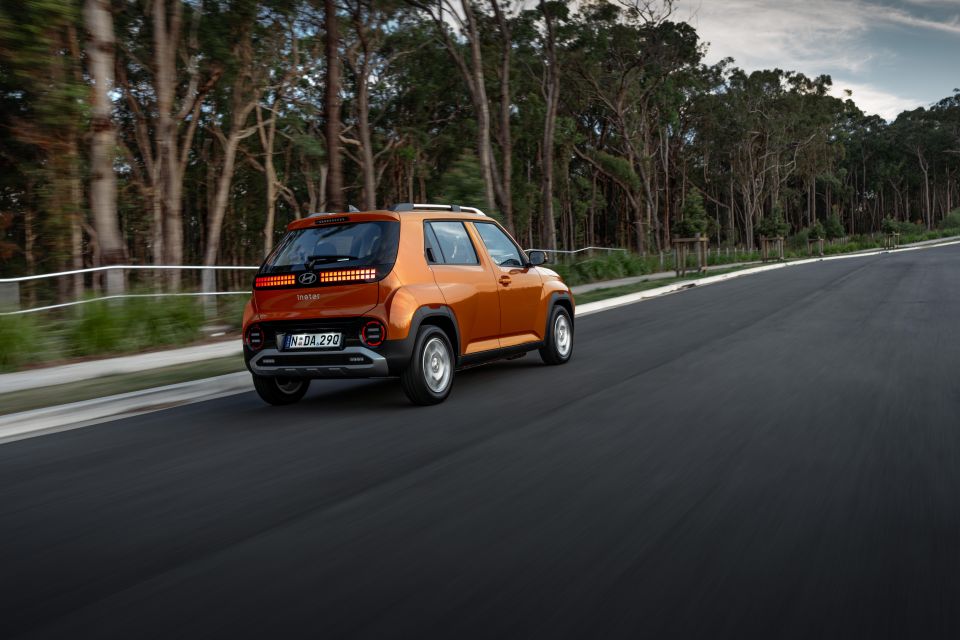
Activating sport mode has a positive impact on the experience, adding some weight to the steering for a more engaging drive. However, it fails to make the sluggish Inster any faster.
Rough regional roads also exacerbate the see-sawing rear suspension, but I never found the Inster to be especially uncomfortable. Overall, it successfully toes the line between SUV comfort and light car agility in most situations.
There are three variants in the Inster lineup.


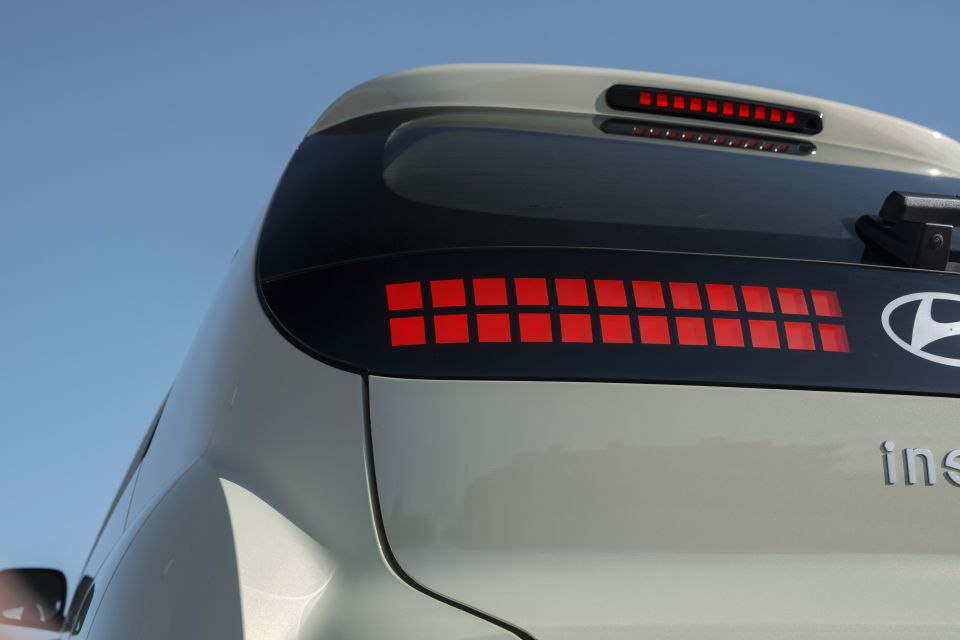

2025 Hyundai Inster Standard Range equipment highlights:
The Extended Range adds:
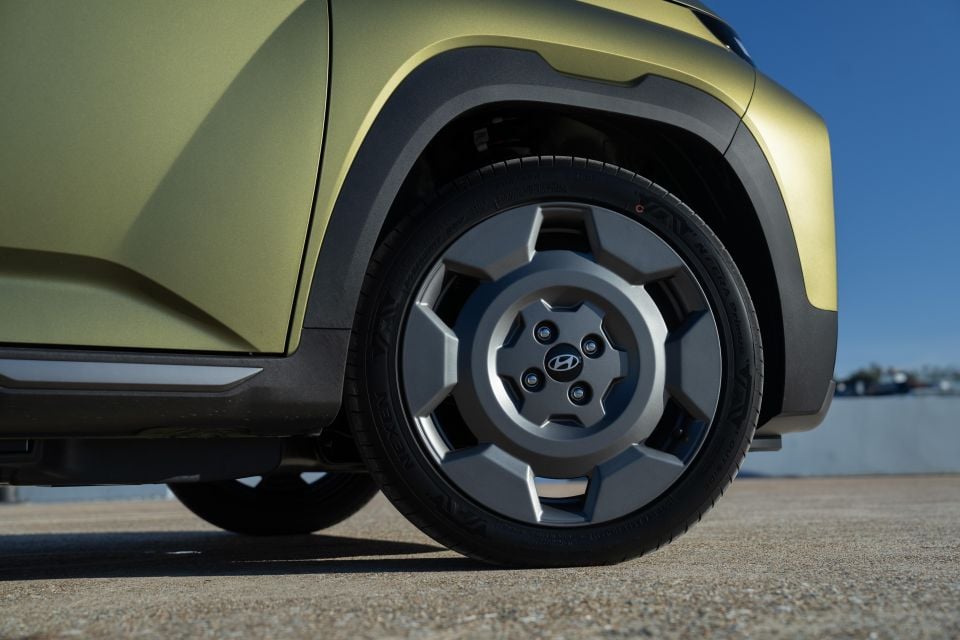
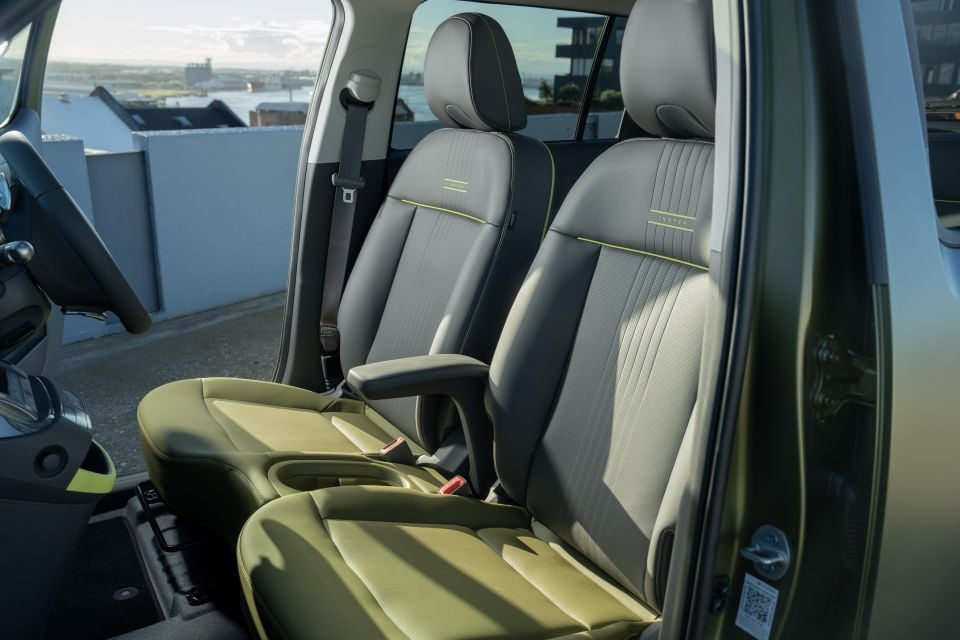
The Inster Cross adds:
The Cross also features the ability for all four seats to be folded flat.
All Inster models come with a complimentary five-year Bluelink subscription, which includes:
To see how the Hyundai Inster stacks up against its rivals, check out our comparison tool
The Hyundai Inster has yet to be tested by ANCAP or Euro NCAP.

Standard safety equipment includes:
The Inster Cross also receives:
To see how the Hyundai Inster stacks up against its rivals, check out our comparison tool
The Hyundai Inster is currently backed by Hyundai Australia’s five-year, unlimited-kilometre vehicle warranty plus an eight-year, 160,000km high-voltage battery warranty. However, the brand is expected to transition to a seven-year, unlimited-kilometre warranty from July 1, 2025, with coverage backdated for all cars sold after January 1.
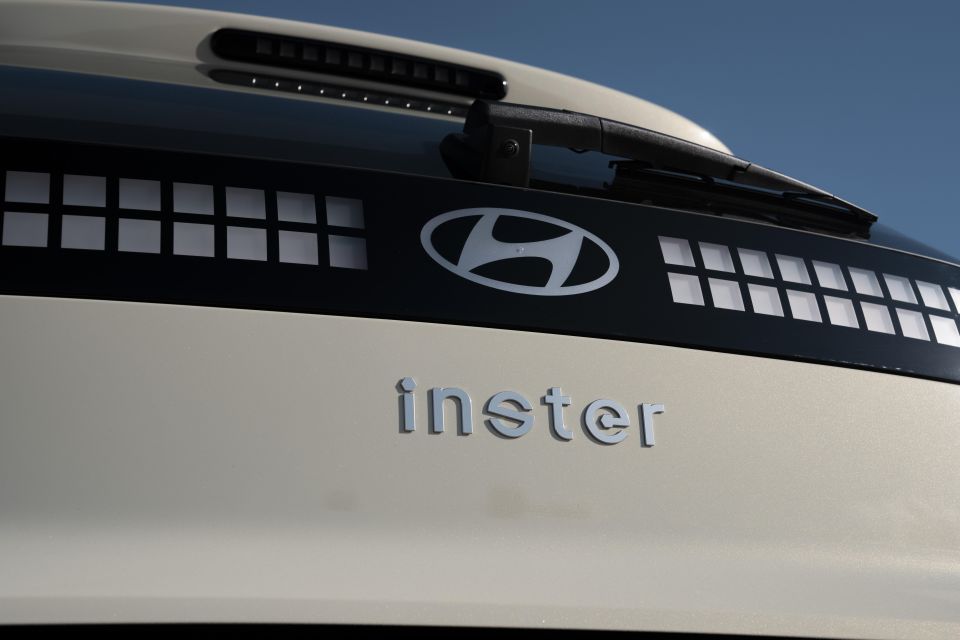
| Servicing and Warranty | Hyundai Inster |
|---|---|
| Warranty | 5 years, unlimited kilometres |
| Roadside assistance | N/A |
| Service intervals | 24 months or 30,000km |
| Capped-price servicing | 4 years |
| Total capped-price service cost | $1310 |
To see how the Hyundai Inster stacks up against its rivals, check out our comparison tool
By many objective measures, the new Hyundai Inster isn’t a particularly savvy buy. Don’t cross it off your list just yet, though.
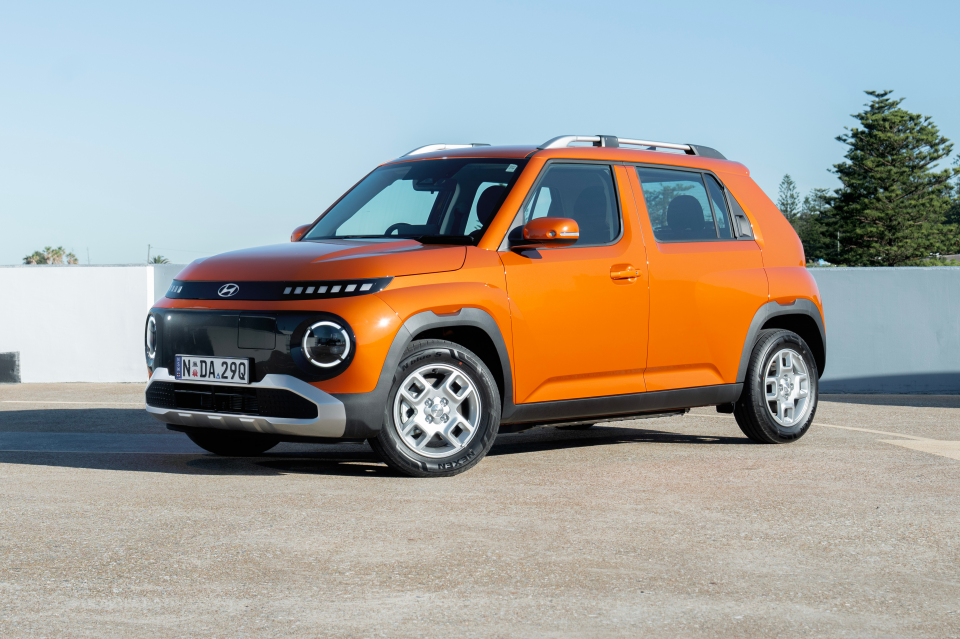
While the Inster is pricey for a small EV with a small battery and an interior seemingly constructed of Lego… it’s just so easy to fall in love with.
The exterior styling is adorable in a Wall-E kind of way, and you’ll be positively shocked by the sheer amount of people and stuff you can cram into the cabin.
And despite its meagre outputs, the Inster is a fun little thing to drive, too.
You can zip around the city with your right foot planted to the floor, grinning from ear to ear as you pull up alongside bemused motorists in their hulking dual-cabs and seven-seat SUVs. That counts for something, right?
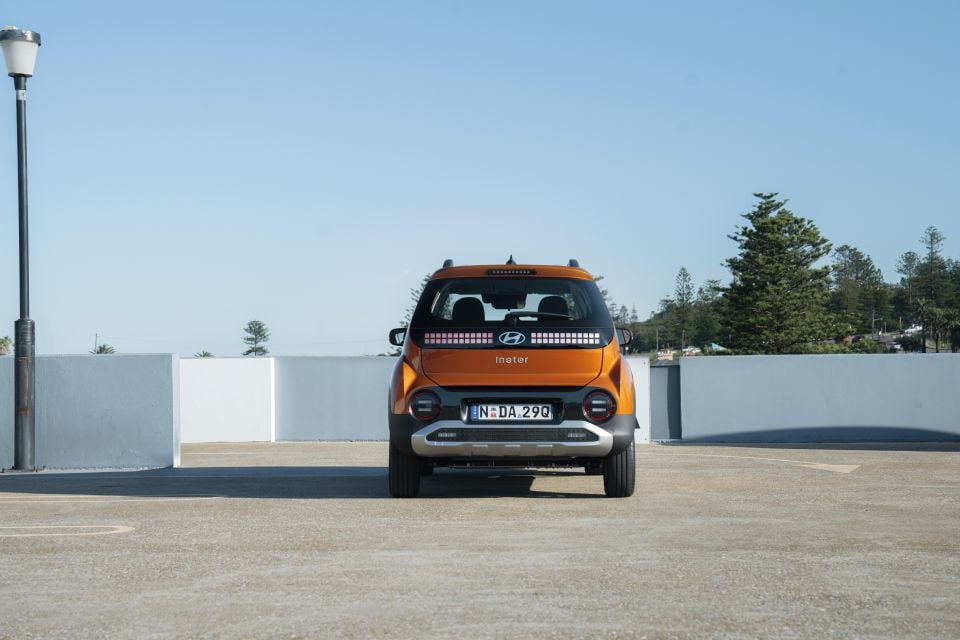
There are also a few boring reasons to recommend the Inster. It’s efficient, relatively cheap to run, and packed with safety equipment.
None of these points will change the fact that the Inster is likely to be a slow seller in Australia, but it remains a welcome addition to the local market.
My pick of the range? The flagship Cross, for its bigger battery, additional creature comforts, and tough aesthetic.
Interested in buying a Hyundai Inster? Get in touch with one of CarExpert’s trusted dealers here
Click the images for the full gallery
Where expert car reviews meet expert car buying – CarExpert gives you trusted advice, personalised service and real savings on your next new car.
Josh Nevett is an automotive journalist based in Melbourne, Australia. Josh studied journalism at The University of Melbourne and has a passion for performance cars, especially those of the 2000s. Away from the office you will either find him on the cricket field or at the MCG cheering on his beloved Melbourne Demons.


Andrew Maclean
1 Month Ago


Josh Nevett
1 Month Ago
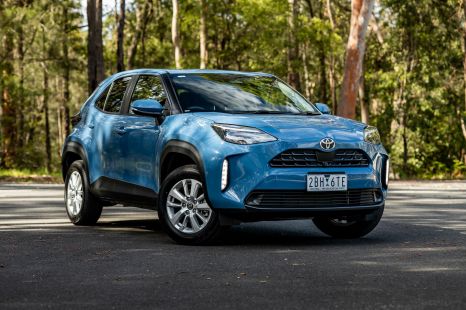

Matt Campbell
24 Days Ago
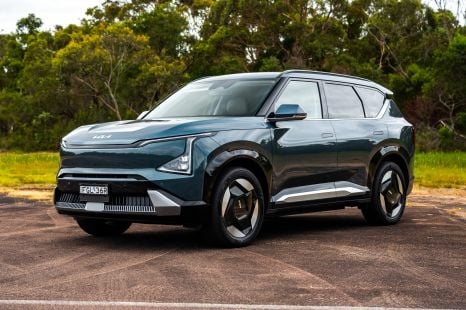

James Wong
17 Days Ago
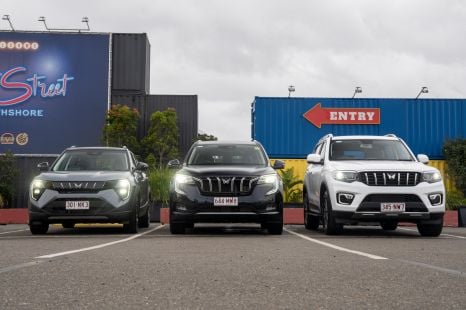

CarExpert.com.au
11 Days Ago
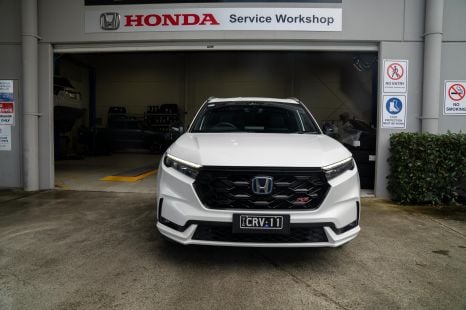

CarExpert.com.au
9 Days Ago